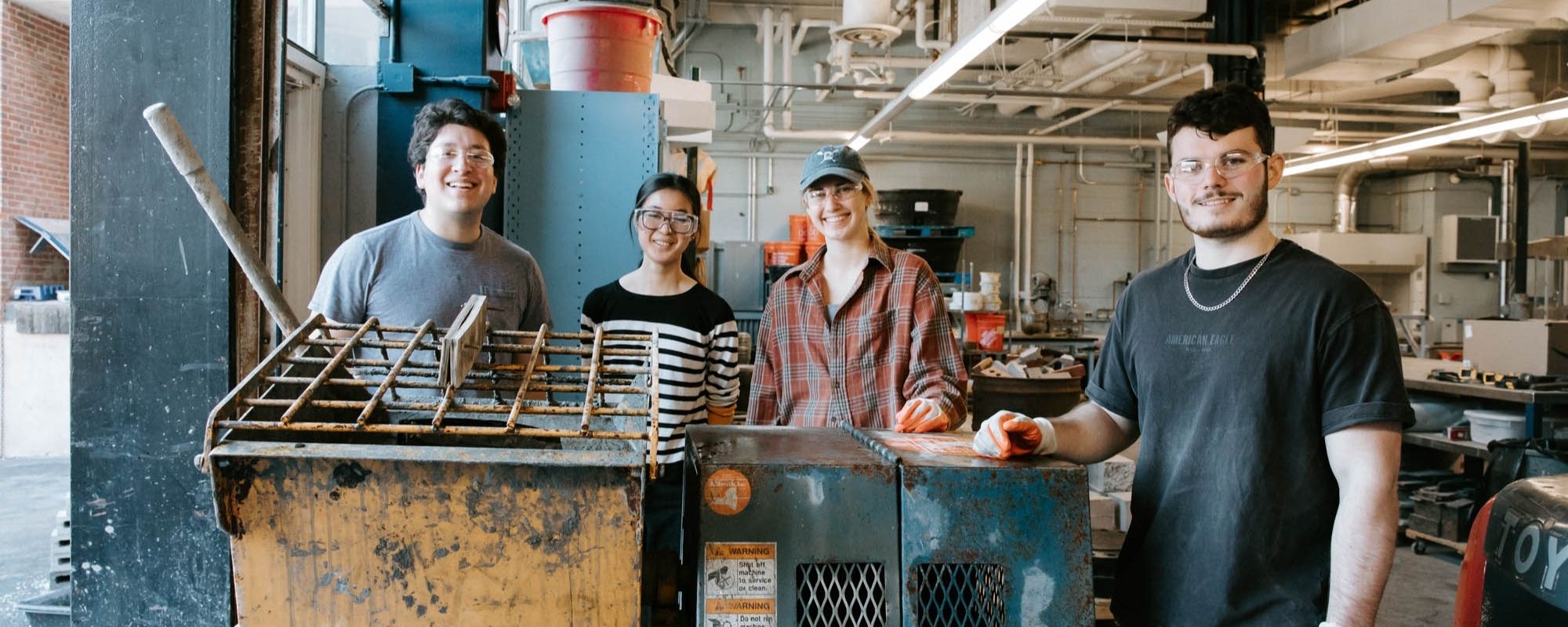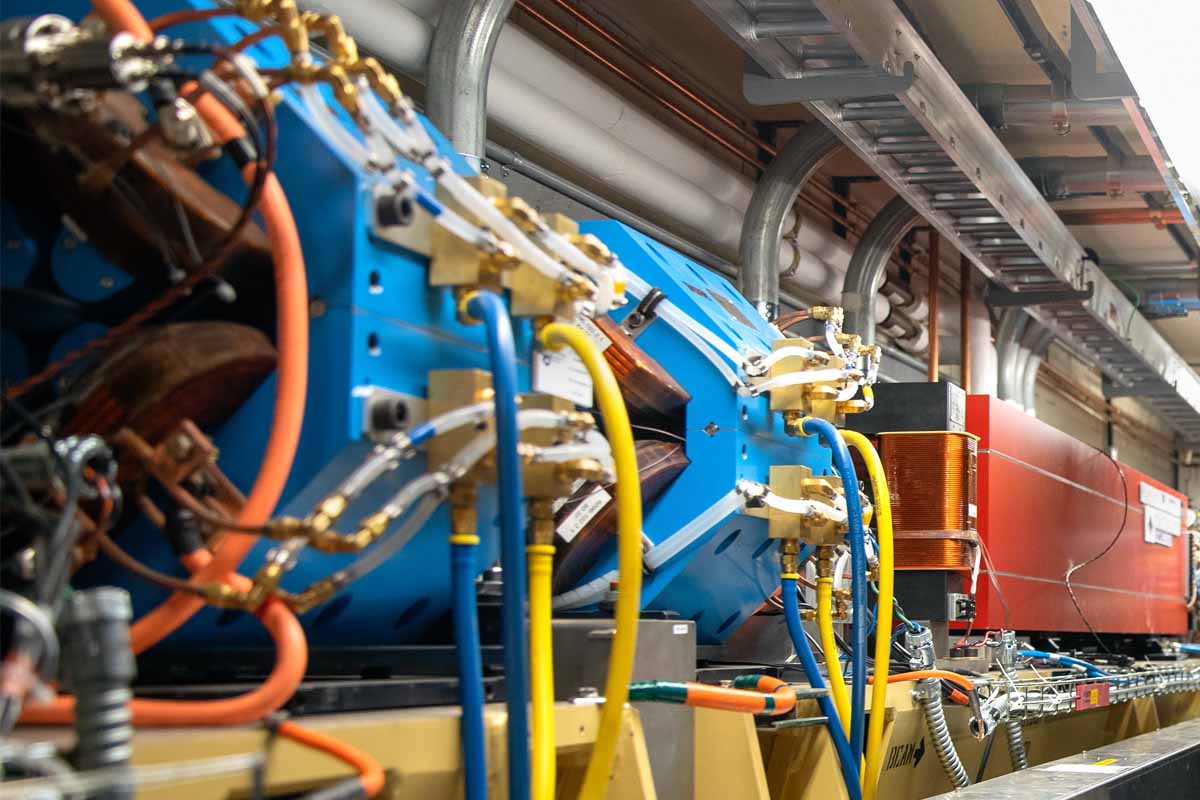Explore our research and instructional laboratories used to support research in environmental engineering, fluid mechanics and hydrology, geotechnical engineering, remote sensing, materials of construction, structural modeling, and static and dynamic loading of large components and systems.
-
Bovay Laboratory Complex
Students receive hands-on experience in the 12,500-sq-ft Bovay Civil Infrastructure Laboratory Complex. Here students observe what large forces and displacements can do to soil, concrete, steel, and other fabricated materials and structures. Students test and validate models in the lab that they’ve developed and built in the classroom, often prompting new theories and new models of infrastructure-behavior.
-
DeFrees Hydraulics Lab
The focal point of research and experimental studies in the environmental fluid mechanics and hydrology program, the DeFrees hydraulics lab is equipped with three main experimental facilities:
- A Wave Tank
Designed to model a complex variety of waves and, in particular, complex solitary wave patterns. - A Wide Meandering Wave-Current Flume
Designed to model shallow coastal waters, rivers, estuaries, the littoral zone of lakes, and more generally any environment where the horizontal length scales are long relative to the depths. - A Tilting Wind Water Tunnel
Designed to model coupled air-water flows but can be used as a single-fluid facility as well for the study of atmospheric (air) flows or water flows.
- A Wave Tank
-
Environmental Teaching Lab
This flexible facility is designed for bench scale experiments and analysis of environmental samples and processes. The Environmental Teaching Lab hosts an automated water treatment plant design competition for upper level undergraduates, and a biocatalysis laboratory for graduate students.
-
Environmental Fluid Mechanics Teaching Laboratory
Comprised of a large-scale experimental facility and the Environmental Technology Instructional Lab, it juxtaposes classroom study with research projects and brings together undergrads with graduate students to create a stimulating, learning environment. The wave tank is one of three flumes in the experimental area and is used to study water-waves and their effects on beaches and the generation and dissipation of tsunamis. The facility also includes a high-head flume to examine open-channel hydraulic flows and a sediment flume to test sediment transport typical of rivers, streams, and aqueduct systems.
Environmental Processes Laboratories
-
Applied Microbiology Lab
A range of equipment for culturing aerobic and anaerobic microbial cultures. This includes constant temperature rooms, anaerobic glove boxes, anaerobic gassing stations, and laminar flow hoods for asceptic work. Equipment for DNA and RNA analysis include gel electrophoresis apparati, a nanoDrop machine, a Bioanalyzer, and PCR and quantitative PCR machines. Microscopes with Fluorescence capabilities enable direct observation of microbial cells with specific features and/or of specific microbial groups.
-
Ecological Engineering Laboratory
A gas chromatograph with flame ionization, thermal conductivity, and electron capture detectors supports analysis of biogenic gases (methane, nitrous oxide, carbon dioxide, hydrogen) as well as conservative gas tracers including sulfur hexafluoride, helium, and argon. Aqueous analytes including major cations/anions, low molecular weight organic acids, and total organic carbon and nitrogen are measured using ion chromatography and total carbon/nitrogen analyzers. The lab also includes bench-scale models of engineered soil systems (e.g., constructed wetlands, infiltration basins) for controlled experiments of coupled biological and physiochemical processes in these systems. Standard wet chemistry lab items are also available.
-
Environmental Biotechnology Laboratory
A newly renovated facility that serves as a stand-alone environmental laboratory geared towards molecular biology applications, housing state-of-art precision instruments critical to detailed microbiological and biotechnology research applications, as well as a full complement of chemicals and glassware along with two fume hoods. The main equipment include Raman Spectroscopy, fluorescence microscope, automated liquid handling systems for high-throughput bioassays, automated DNA extraction unit, quantitative qPCR machine, microplate readers, cell incubators and other environmental microbiology and molecular biology-related equipment.
-
Environmental Chemistry Lab
This lab is equipped for trace analysis of polar and semi-polar molecules in aquatic matrices. The featured instrument is a quadrupole-orbitrap high-resolution mass spectrometer (HR-MS) that enables sensitive quantitation and exploratory qualitative analyses aimed at discovering non-targeted chemicals in impacted environments or identifying intermediates of transformation processes. The HR-MS is paired with a standard HPLC system and an eaasyNano LC system and can be fit with electrospray ionization, atmospheric pressure chemical ionization, and nanospray sources.
-
Quantitative Microbiology Lab
This lab is equipped with microbiology and molecular biology equipment required to culture and genetically engineer strains of the budding yeast, Saccharomyces cerevisiae, and the bacterium Escherichia coli. This includes refrigerated incubators, rotating shakers, laminar flow hood, -80C freezer, PCR machine, gel electropheresis system, electroporator, as well as standard microbiology and molecular biology equipment such as micropipettes, microbalances, vortexers, stir plates, pH meter, dry heat baths, refrigerated circulating water bath, refrigerators and freezers. In addition, the Quantitative Microbiology Lab has equipment to measure and image the growth of microbial populations/communities and their gene expression via fluorescent reporters: a fluorescence stereomicroscope with digital camera, a fluorescence inverted microscope with stage-top incubation, motorized XY stage and digital camera, a fluorescence/absorbance microplate reader and a benchtop flow cytometer.


